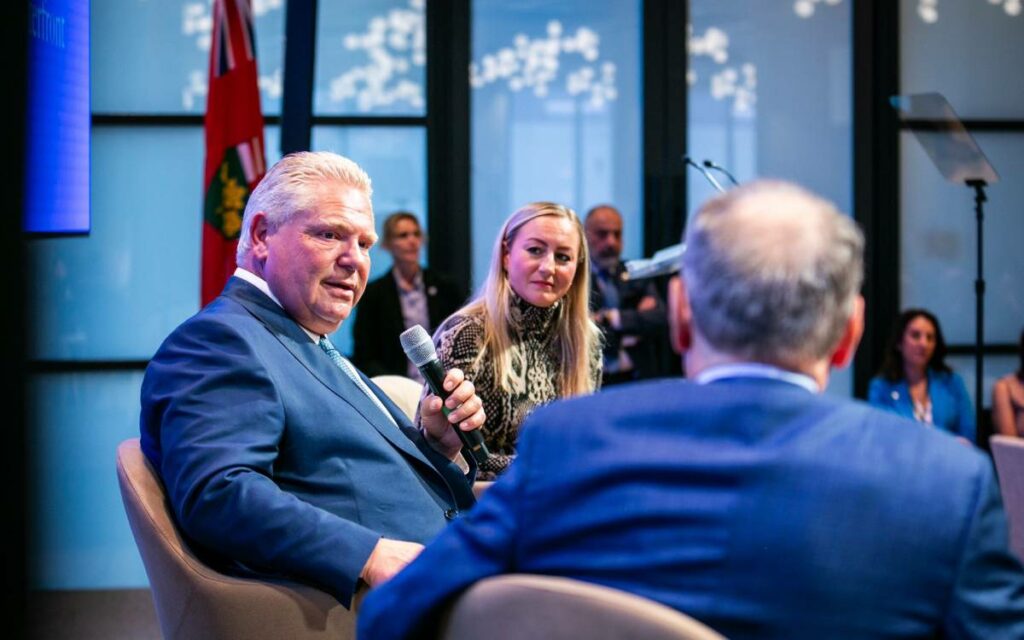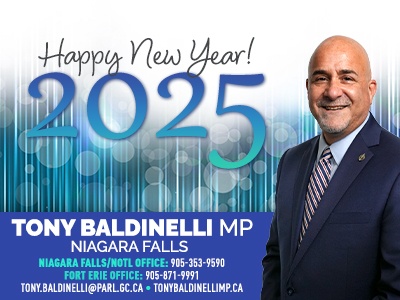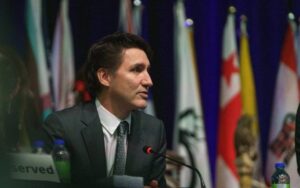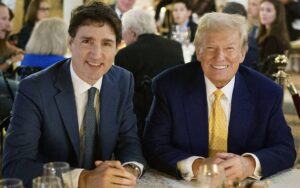
Fiscal update highlights shifts in debt, corporate aid, and government size. Photo credit: Twitter/Doug Ford
The Ford government tabled its fall economic update earlier this month. If anyone doubted that Ford and Trudeau were cut from the same cloth, the numbers extinguish that doubt.
It’s become clear that Ford has adopted the Trudeau government’s three-pronged approach to fiscal policy: rising debt, massive corporate handouts and growth in government.
Let’s consider the three issues in turn.
First, debt.
When he sought the prime minister’s office in 2015, Trudeau promised to run three “modest” deficits in his first term and post a surplus in his fourth year.
But once Trudeau got the keys to the castle, everything went off the rails. He ran deficits much larger than promised. He doubled the national debt. And Trudeau has yet to balance a budget eight years in.
Ford hasn’t fared much better.
When he ran for premier in 2018, Ford promised to end the party with taxpayer cash.
But neither Ford nor Trudeau can stop partying on the taxpayer dime.
Yes, Ford had a big mess to clean up after years of provincial Liberal mismanagement. But Ford has been premier for almost six years and the red ink isn’t going anywhere.
The Ford government plans to spend $56.9 billion more this year than the Wynne government spent during its last year in office. That’s $25 billion over and above the rate of inflation.
Another way Ford has copied Trudeau is on corporate welfare. Both men swept into office and drove corporate welfare into overdrive.
Trudeau earned himself a reputation as the king of corporate welfare. He gave billions to wealthy companies like Air Canada, Air Transat, Algoma Steel and Bombardier.
But Ford came to power and said, “hold my buck-a-beer.” He wanted in on the action.
Ford joined Trudeau to hand $30 billion of taxpayer cash to two wealthy auto giants, Volkswagen and Stellantis. He also went solo in handing out money to other rich companies like Magna International.
And reports indicate Ford wanted to give billions to Toyota as well. Shockingly, even Trudeau was tired of handing out taxpayer cash to auto giants and nixed the deal.
The student has become the teacher.
Then there’s the growth of government.
Since Trudeau took over Parliament Hill, government has grown virtually everywhere. Trudeau especially likes creating costly new federal bureaucracies. One example is the Canada Infrastructure Bank, created in 2017.
The bank’s stated purpose was “to invest in larger, transformational and revenue generating projects” by partnering with the private sector.
But the Parliamentary Budget Officer found three years later that the bank had yet to attract a dollar of private-sector investment, even after spending billions of taxpayer cash.
The bank’s performance was so poor that a multi-party House of Commons committee recommended “the Government of Canada abolish the Canada Infrastructure Bank.”
Instead of learning lessons from this federal boondoggle, Ford plans to emulate it.
The Ford government created a new Ontario Infrastructure Bank, modeled on its beleaguered federal counterpart. The announcement came in the fall economic update.
Ford committed $3 billion of taxpayer cash to the project, despite the federal bank it is modeled on being an abject failure.
With both Trudeau and Ford having held their jobs for more than half a decade, it’s become clear that both think big government is key to growing the economy.
But history shows the opposite is true.
It’s time to end the big government debt parade in Ottawa and Queen’s Park. No more debt, no more handouts and no more bloating the bureaucracy.

Jay Goldberg is the Ontario Director at the Canadian Taxpayers Federation. He previously served as a policy fellow at the Munk School of Public Policy and Global Affairs. Jay holds a Ph.D. in Political Science from the University of Toronto.




















